Product
Shopify Google Sheets Integration: How to connect Shopify with Google Sheets
Effortlessly export and sync Shopify data into Google Sheets and automate data updates and streamline your project managem
Here's a quick step-by-step guide 🔝
Here's a quick step-by-step guide 🔝



Integrating Shopify with Google Sheets enables you to export all the data from your Shopify store to Google Sheets seamlessly. This integration helps you analyze sales, track inventory, and monitor customer behaviour with ease. Superjoin simplifies connecting Shopify to Google Sheets, making it accessible even for users without technical expertise.
For Shopify store owners, this integration offers enhanced tracking and analytics, providing real-time reporting and better data management.
Best Ways to Connect Shopify to Google Sheets
Method 1: Using Superjoin
Superjoin provides the fastest and easiest way to connect Shopify to Google Sheets without any technical know-how or complex setup processes. Here’s how it works:
Navigate to “Add-ons” and select “Get add-ons”.
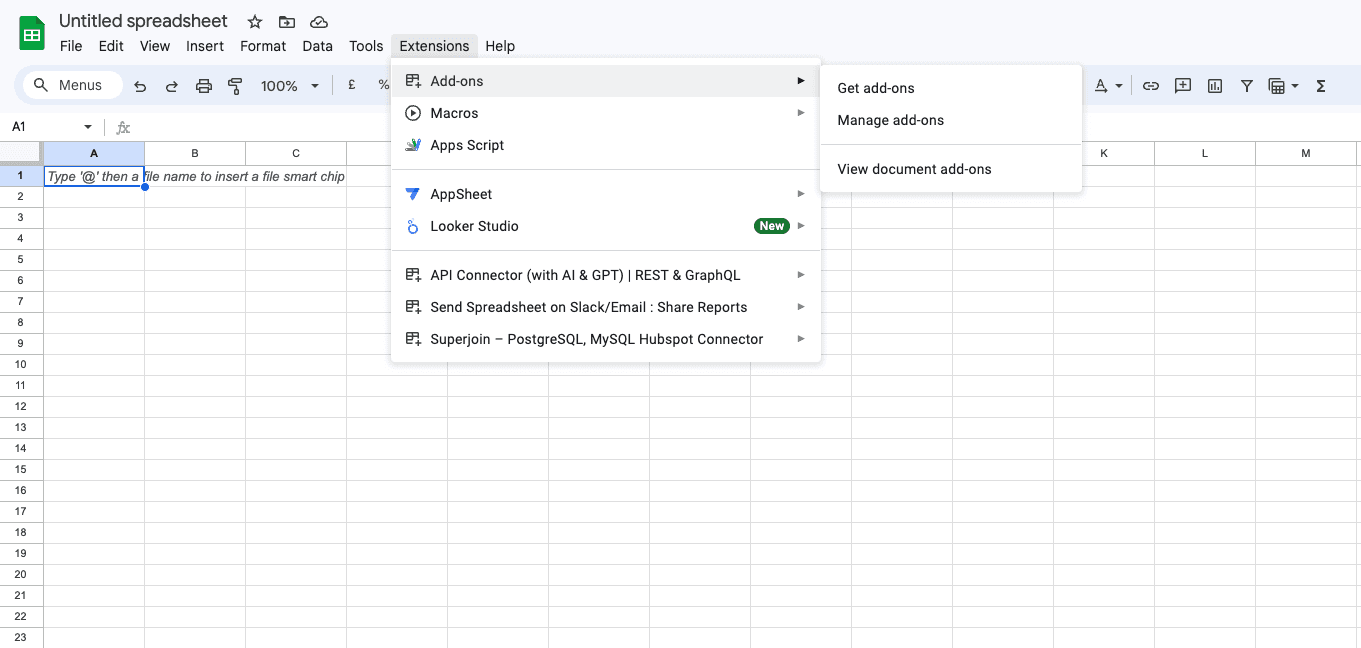
Search for “Superjoin” and click “Install”.
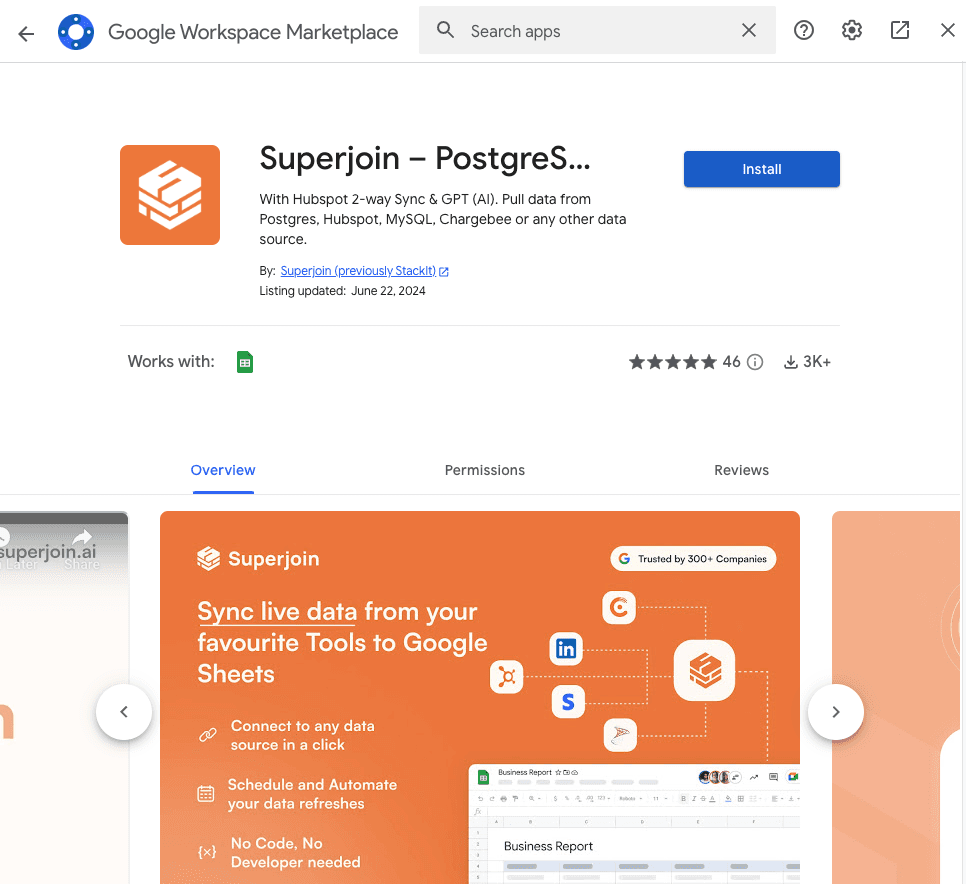
Open Superjoin from the Extensions menu.

Click on “Sources” on the Superjoin homepage and click on " Connect New Source" and then choose Shopify.
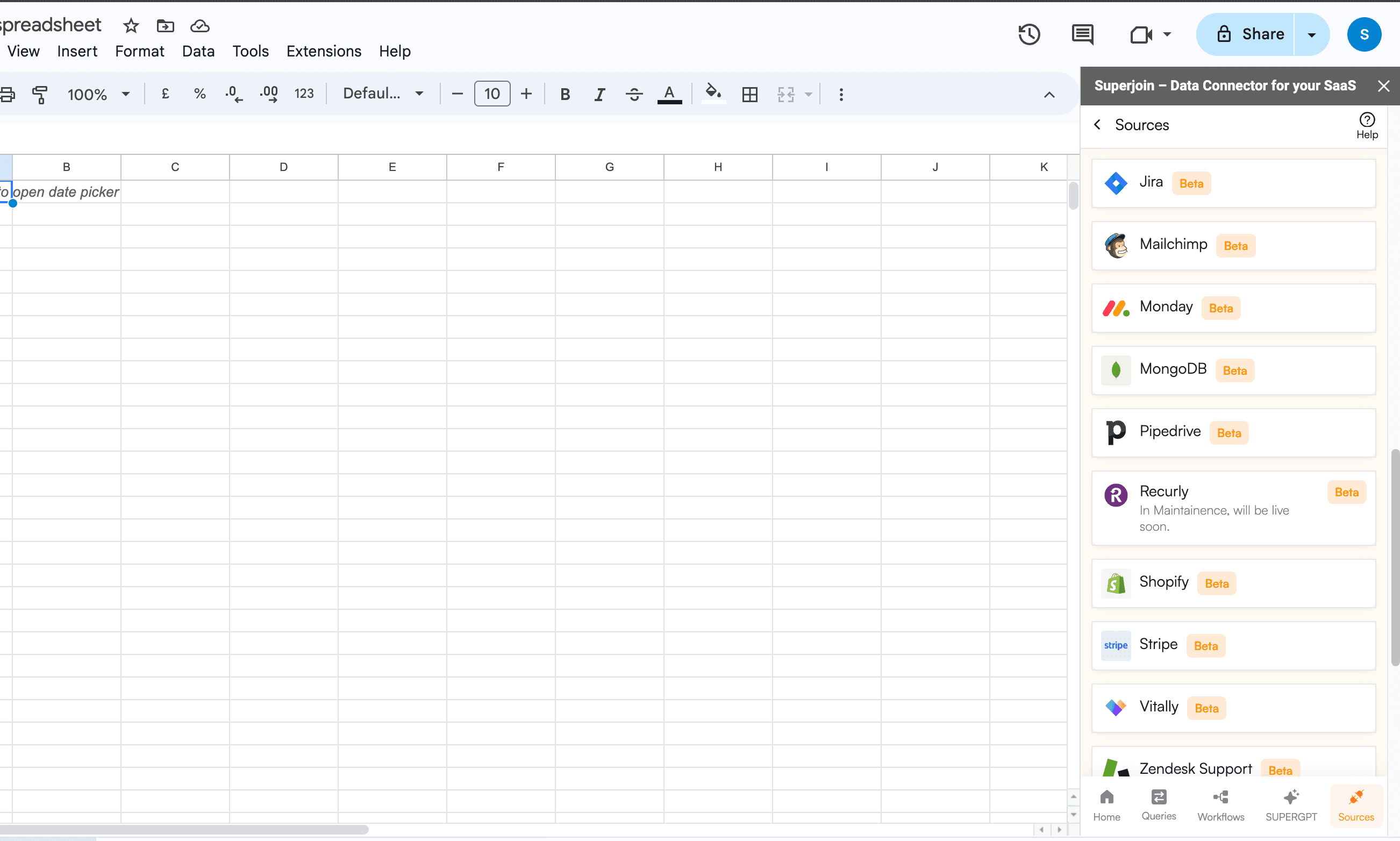
Enter the required details and Click “Authorize” to connect your Shopify account with Superjoin.
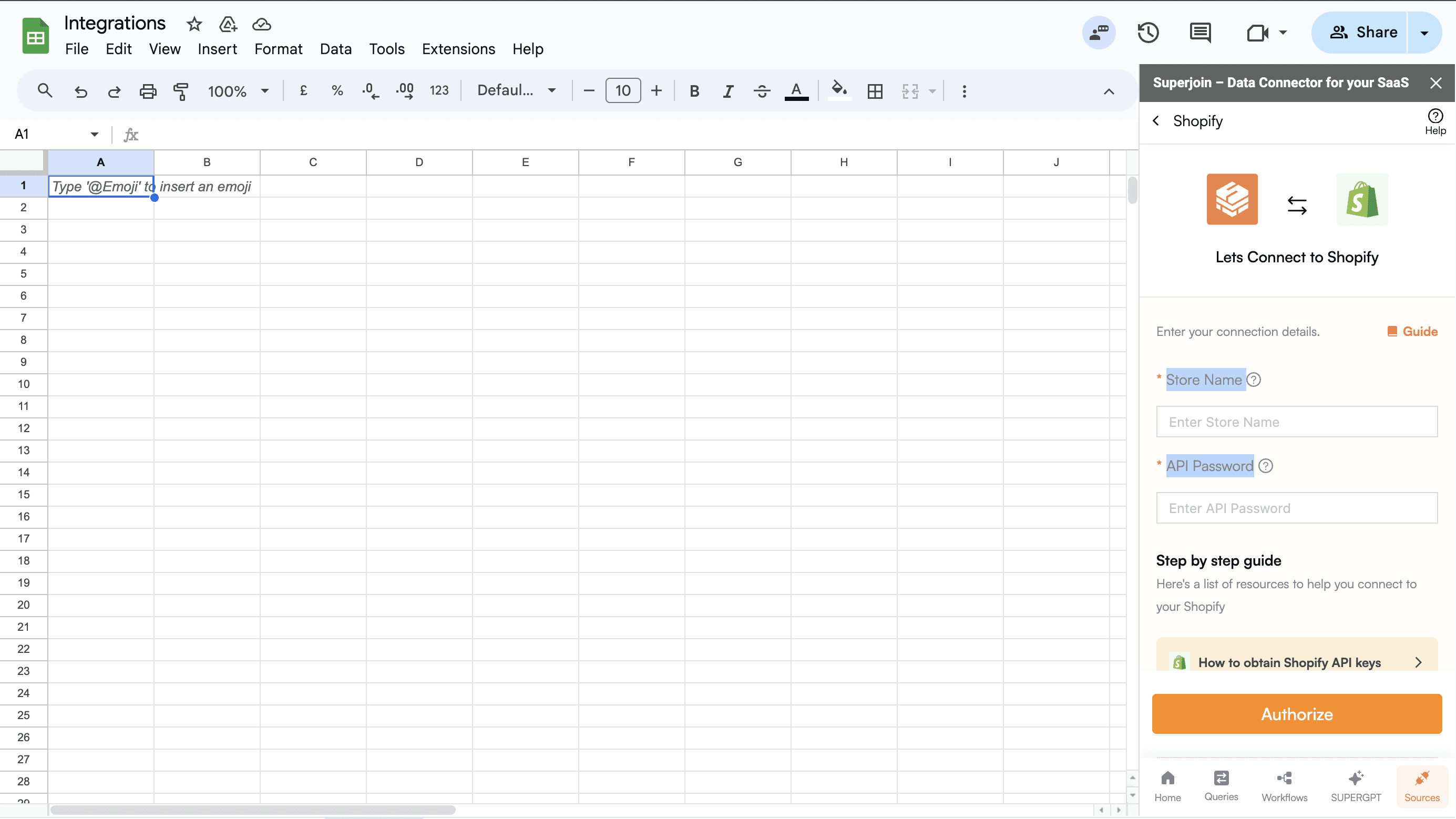
Once connected, select the specific fields you want to import from Shopify using the data preview section.
Click “Import Data” to bring Shopify data into Google Sheets.
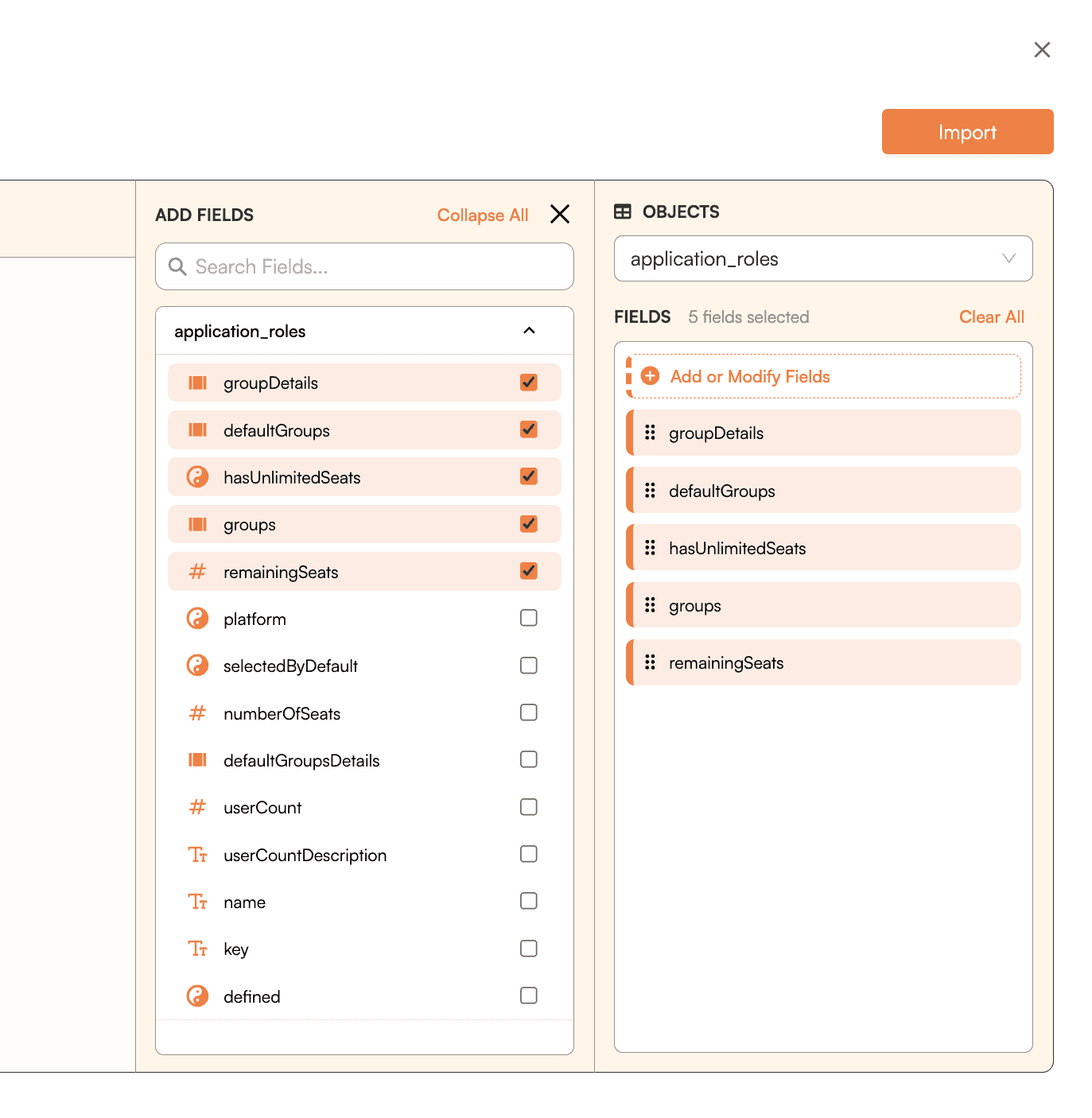
Set a schedule to automatically refresh data after importing, ensuring your Google Sheets always contain the latest information from Shopify.

Method 2: Using Zapier
Sign up for a Zapier account and log in.
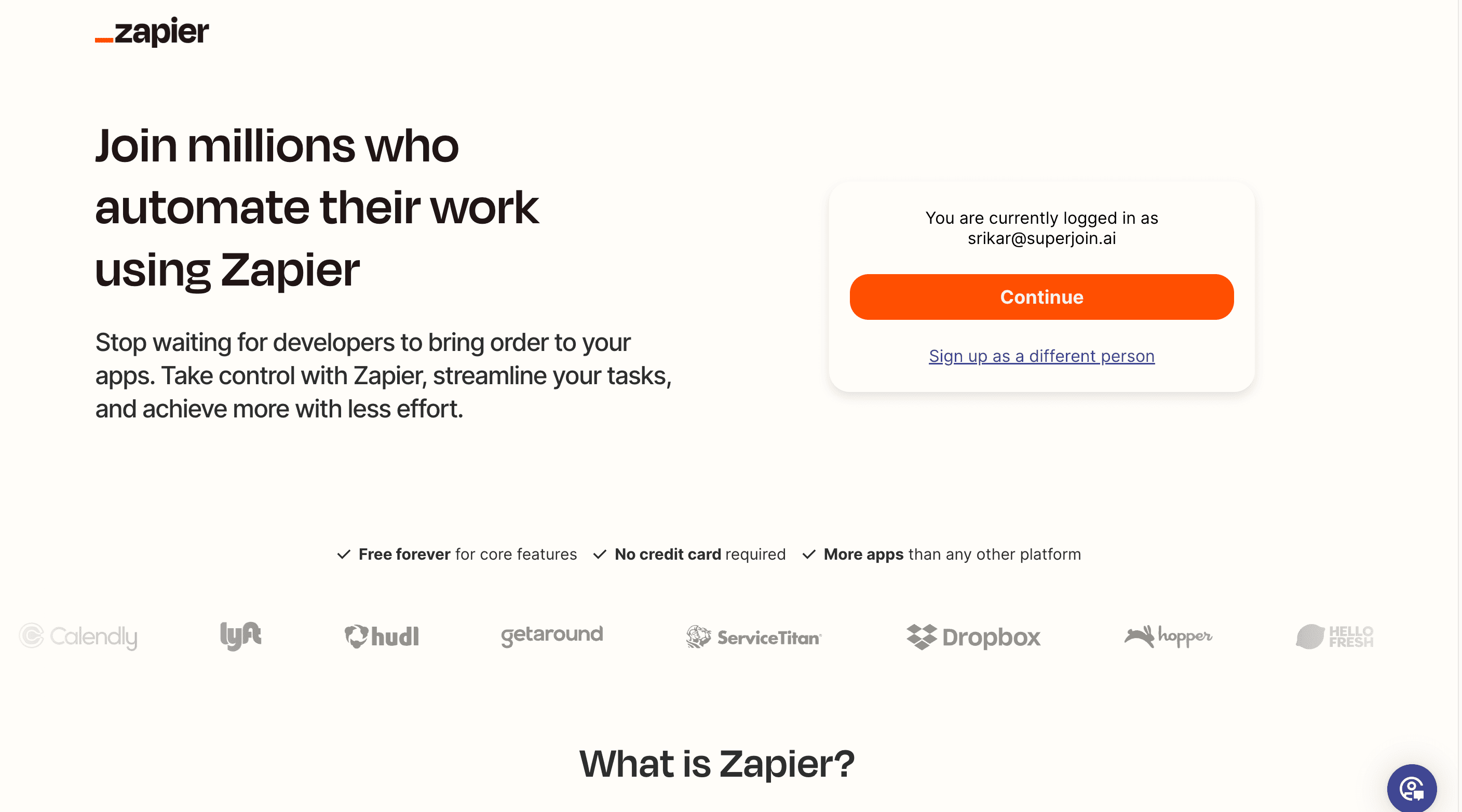
Create a new Zap and select Shopify as the trigger app.
Choose a trigger event.
Connect your Shopify account to Zapier.
Select Google Sheets as the action app and choose "Create Spreadsheet Row" as the action event.
Connect your Google Sheets account to Zapier.
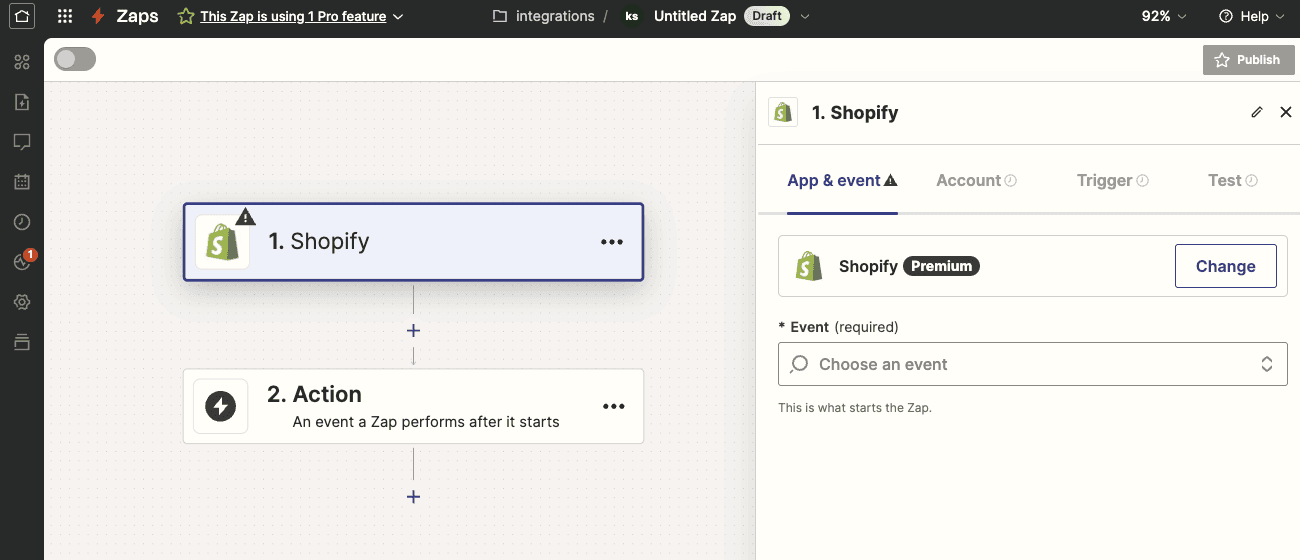
Map the data fields from Shopify to Google Sheets.
Test the Zap to ensure it works correctly.
Turn on the Zap to automate data transfer from Shopify to Google Sheets.
Limitations:
Zapier is useful for creating automated workflows, but it can be limited by the available triggers and actions.
Why Choose Superjoin?
Intuitive Interface: Superjoin offers an intuitive interface that is accessible to users without technical expertise.
Time-Saving: It saves time by eliminating the need for complex query writing.
Automated Updates: Automated updates ensure your data remains current without manual intervention.
Seamless Integration: Seamlessly integrates with Google Sheets for a smooth workflow.
Superjoin provides a comprehensive solution for connecting various integrations to Google Sheets. Its user-friendly design and automation features make it an excellent choice for anyone looking to streamline their data import process and enhance their data analysis capabilities.
Integrating Shopify with Google Sheets enables you to export all the data from your Shopify store to Google Sheets seamlessly. This integration helps you analyze sales, track inventory, and monitor customer behaviour with ease. Superjoin simplifies connecting Shopify to Google Sheets, making it accessible even for users without technical expertise.
For Shopify store owners, this integration offers enhanced tracking and analytics, providing real-time reporting and better data management.
Best Ways to Connect Shopify to Google Sheets
Method 1: Using Superjoin
Superjoin provides the fastest and easiest way to connect Shopify to Google Sheets without any technical know-how or complex setup processes. Here’s how it works:
Navigate to “Add-ons” and select “Get add-ons”.

Search for “Superjoin” and click “Install”.

Open Superjoin from the Extensions menu.

Click on “Sources” on the Superjoin homepage and click on " Connect New Source" and then choose Shopify.

Enter the required details and Click “Authorize” to connect your Shopify account with Superjoin.

Once connected, select the specific fields you want to import from Shopify using the data preview section.
Click “Import Data” to bring Shopify data into Google Sheets.

Set a schedule to automatically refresh data after importing, ensuring your Google Sheets always contain the latest information from Shopify.

Method 2: Using Zapier
Sign up for a Zapier account and log in.

Create a new Zap and select Shopify as the trigger app.
Choose a trigger event.
Connect your Shopify account to Zapier.
Select Google Sheets as the action app and choose "Create Spreadsheet Row" as the action event.
Connect your Google Sheets account to Zapier.

Map the data fields from Shopify to Google Sheets.
Test the Zap to ensure it works correctly.
Turn on the Zap to automate data transfer from Shopify to Google Sheets.
Limitations:
Zapier is useful for creating automated workflows, but it can be limited by the available triggers and actions.
Why Choose Superjoin?
Intuitive Interface: Superjoin offers an intuitive interface that is accessible to users without technical expertise.
Time-Saving: It saves time by eliminating the need for complex query writing.
Automated Updates: Automated updates ensure your data remains current without manual intervention.
Seamless Integration: Seamlessly integrates with Google Sheets for a smooth workflow.
Superjoin provides a comprehensive solution for connecting various integrations to Google Sheets. Its user-friendly design and automation features make it an excellent choice for anyone looking to streamline their data import process and enhance their data analysis capabilities.
FAQs
Can I use Superjoin with multiple Shopify stores?
Can I use Superjoin with multiple Shopify stores?
How often can I schedule data updates with Superjoin?
How often can I schedule data updates with Superjoin?
Is my Shopify data secure with Superjoin?
Is my Shopify data secure with Superjoin?
Automatic Data Pulls
Visual Data Preview
Set Alerts
other related blogs
Try it now

